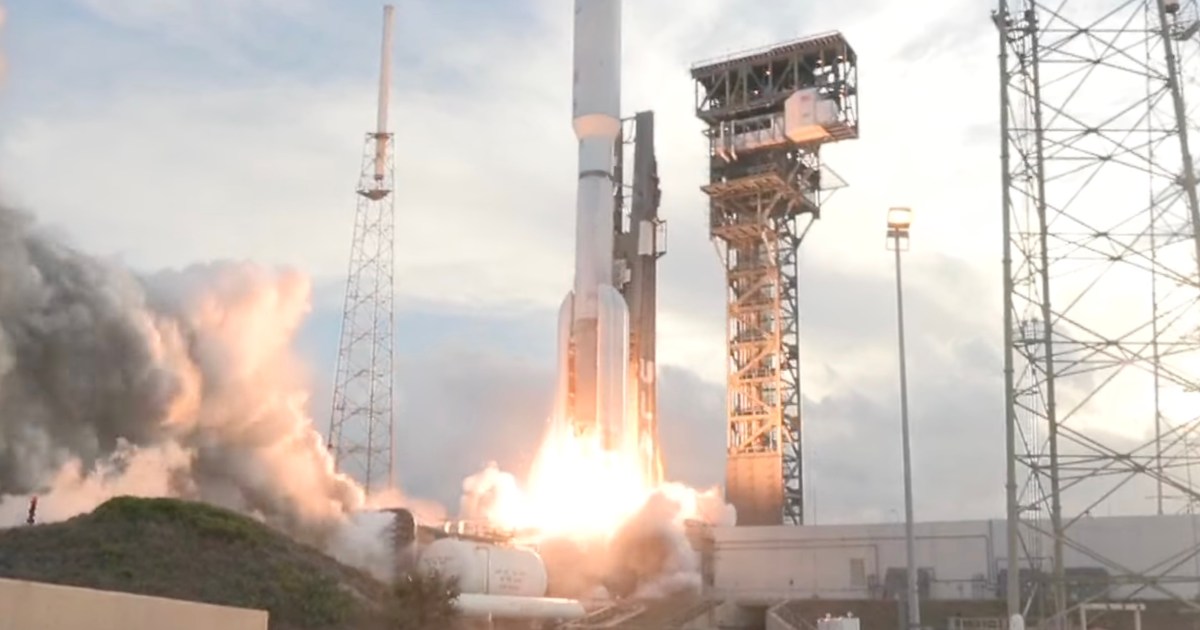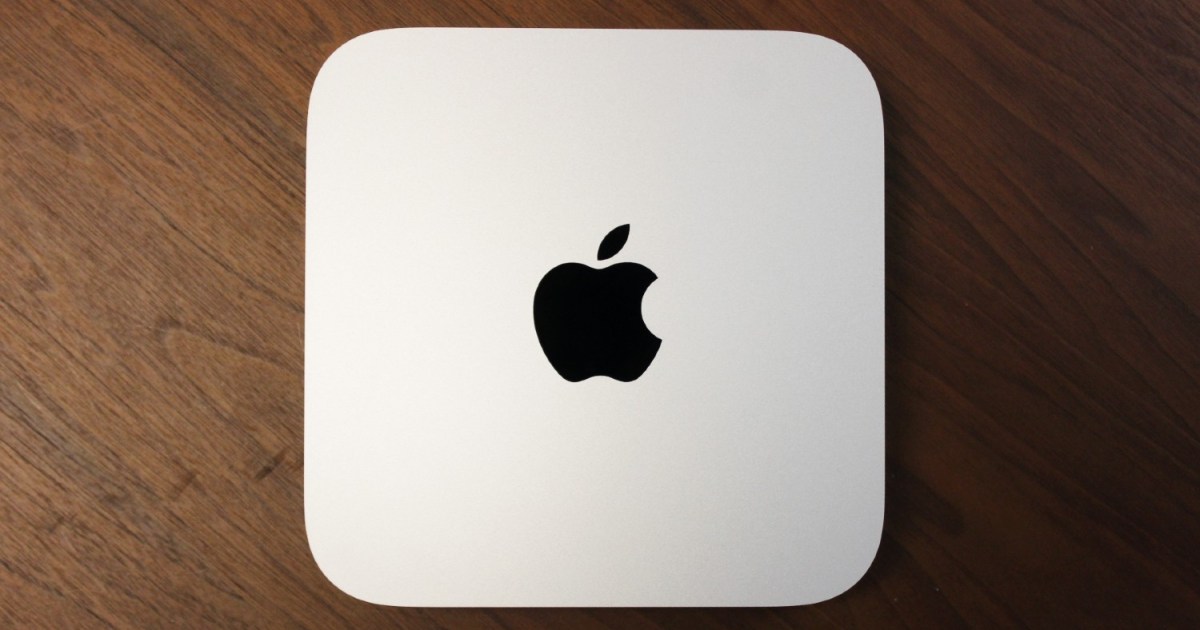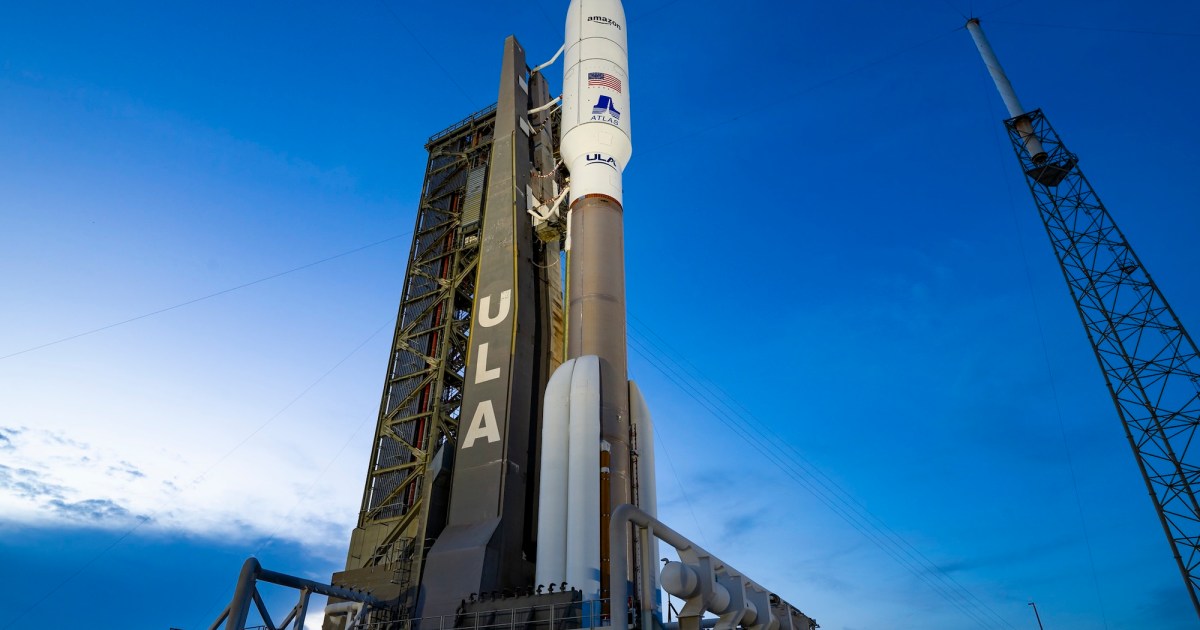Amazon is advancing its Project Kuiper initiative with the upcoming launch of its second batch of internet satellites, a critical step in its mission to establish a robust constellation rivaling SpaceX’s Starlink service. This next deployment, known as the KA-02 mission, signifies Amazon’s continued commitment to providing global satellite internet access.
KA-02 Mission: Launch Details and Objectives
The KA-02 mission, previously rescheduled due to adverse weather conditions, is now poised for liftoff. Amazon, in collaboration with rocket provider United Launch Alliance (ULA), anticipates launching the satellites on Monday, June 16. An Atlas V 551 rocket, distinguished by its five side-mounted solid rocket boosters and a medium-length payload fairing, will carry the Project Kuiper satellites into orbit from Cape Canaveral, Florida.
This mission will deploy another 27 satellites, matching the number sent into orbit during Project Kuiper’s inaugural launch several months prior. These launches are foundational to Amazon’s strategy to build out its low Earth orbit (LEO) network.
Project Kuiper’s Ambitious Roadmap to Global Connectivity
Amazon’s vision for Project Kuiper is expansive. The company aims to initiate a global high-speed, low-latency satellite internet service with an initial deployment of at least 1,000 satellites by the close of this year. The ultimate goal is to expand the constellation to approximately 3,200 satellites. This full deployment is crucial for enhancing network performance, increasing capacity, and ensuring reliable service for eventual paying customers worldwide.
Competing in the Evolving Satellite Internet Arena
While SpaceX’s Starlink has a significant head start, having begun its satellite deployment in 2019, Amazon’s Project Kuiper plans to differentiate itself through several key strategies. These include offering more affordable user terminals and leveraging Amazon Web Services (AWS) for sophisticated cloud integration and advanced service capabilities. Project Kuiper is also focused on delivering seamless connectivity to remote and underserved regions globally, often by integrating with existing telecommunications infrastructure. Through these approaches, Amazon aims to secure a substantial market share in the rapidly expanding satellite internet sector, a journey that will unfold over the next several years.
How to Watch the KA-02 Launch
Amazon and ULA are targeting Monday, June 16, at 1:25 p.m. ET (10:25 a.m. PT) for the KA-02 mission launch from Cape Canaveral, Florida.
You can watch a livestream of the launch via the player embedded at the top of this page. The broadcast is scheduled to commence at approximately 1 p.m. ET (10 a.m. PT).
Furthermore, residents on the East Coast might have an opportunity to see the Atlas V rocket ascending to orbit if weather conditions are favorable. This chart reveals the visibility timeline post-launch, based on your specific location.
Looking Ahead for Project Kuiper
The successful deployment of this second batch of satellites will mark another milestone for Amazon’s Project Kuiper. As the constellation grows, the potential for a new era of global connectivity comes closer to reality, promising enhanced internet access for users across the globe. Stay tuned for further updates on Project Kuiper’s progress and its impact on the tech landscape.











